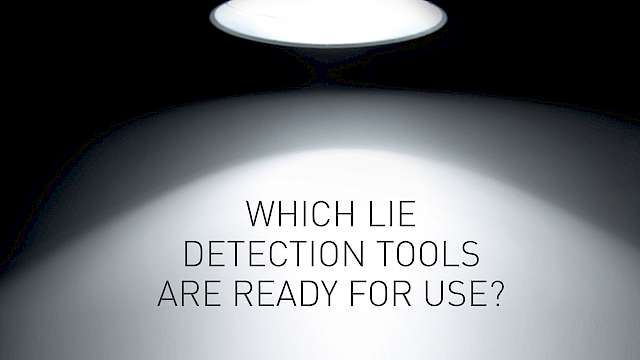Have you ever met someone and just immediately ‘clicked’ with them? You felt at ease, the conversation flowed, and you felt happy and comfortable in their company. If so, you have experienced that elusive and yet vital component of a good relationship: rapport.
Rapport has been defined as perceived closeness, harmony, and trust, built through verbal communications and self-disclosure. Rapport has also been described as consisting of mutual attention (the degree of involvement between conversationalists), positivity (the emotional tone of the conversation) and coordination (reciprocity in responses, synchrony, or accommodation).
Rapport has been defined as perceived closeness, harmony, and trust, built through verbal communications and self-disclosure
The components of rapport are created via non-verbal and verbal behaviours expressed by the individuals in the conversation.
Why should we care about rapport?
Perhaps unsurprisingly, rapport is positively related to the quality of relationships, and other outcomes, in a variety of settings. For instance, in the workplace, organisational success and job satisfaction is reliant on perceived feelings of closeness felt between supervisors and subordinates.
Crucially, rapport is also considered important to investigative interviewing for law enforcement and intelligence gathering purposes, as rapport between the interviewer and interviewee can increase the amount of information provided and engender greater cooperation. However, intelligence and law enforcement interviewers do not always succeed in maintaining adequate levels of rapport. So, by determining how people achieve rapport in conversations, we may be able to infer the means to strategically increase feelings of rapport.
Measuring rapport
The first step towards strategically enhancing rapport is to figure out how to measure it. This is a tricky question, as attributes such as affinity or harmony between individuals are not easily measured or quantified. Nonetheless, research suggests that various cues exhibited by conversationalists can indicate the presence of rapport.
Behavioural cues such as gesturing, backchanneling, direct eye contact, and postural mirroring are good predictors of rapport. However, behavioural cues to rapport can be sensitive to the social context. For instance, these cues were good predictors of rapport between dyads who were debating (a competitive conversation) but not when dyads were planning a trip (a cooperative conversation).
Subjective cues, on the other hand, are those which are not perceived directly but which are inferred; such cues include psychological states (e.g. enjoyment, involvement, or nervousness) or latent psychological traits (e.g. agreeableness, dominance, or expressivity) which can be inferred from behaviours, facial expressions, and movements. Subjective cues can help outside observers form more accurate judgements of the rapport felt between conversationalists, suggesting subjective cues may actually be more useful in measuring rapport.
How to enhance rapport
Practically speaking, there are several ways to strategically create or enhance rapport. Agreeing with your partner and providing positive reinforcement have been associated with feelings of rapport and affiliation. Personal disclosure (providing personal information) in conversations has also been linked to rapport and is thought to work by enhancing positivity in the conversation. Other research indicates that synchronising verbal and non-verbal behaviours via strategic mimicry acts to increase rapport.
Although ‘synchrony’ often refers to wider level coordination (in terms of turn-taking, and reciprocity in responses), synchrony at the word level has also been associated with increased rapport.
Where conversationalists change their use of a particular class of words (function words (e.g. ‘the’, ‘and’, ‘in’, ‘she’, ‘have’) to be similar to one another, this has been associated with increased perceptions of rapport. Further, these beneficial effects of word synchrony upon rapport are apparent where non-verbal signals are greatly reduced, such as in computer-mediated communication. One proposal for the mechanisms underlying the effects of word-level synchrony is that it helps to establish two of the components of rapport – coordination and positivity.
Further research
There is still a lot of work to be done in defining and measuring rapport. Much rapport research has focused on non-verbal behaviours expressed in face-to-face conversations. However, given the increasing prevalence and importance of relationships formed and maintained online, it is just as important to study the verbal behaviours and responses that constitute rapport.
Measuring and strategically increasing synchrony and coordination in word use has promise in this area but does not always influence reported rapport. Some researchers suggest that synchrony in word use represents engagement in the conversation, rather than the formation of rapport. In addition, most rapport research uses strangers as participants, but the behaviours that create or express rapport are suggested to change along the timeline of a relationship.
Clearly, further research into the nature of rapport, its behaviours, and how to assess if rapport has been formed or not is necessary if we are to successfully harness rapport as a strategic tool.
Copyright Information
As part of CREST’s commitment to open access research, this text is available under a Creative Commons BY-NC-SA 4.0 licence. Please refer to our Copyright page for full details.
IMAGE CREDITS: Copyright ©2024 R. Stevens / CREST (CC BY-SA 4.0)







